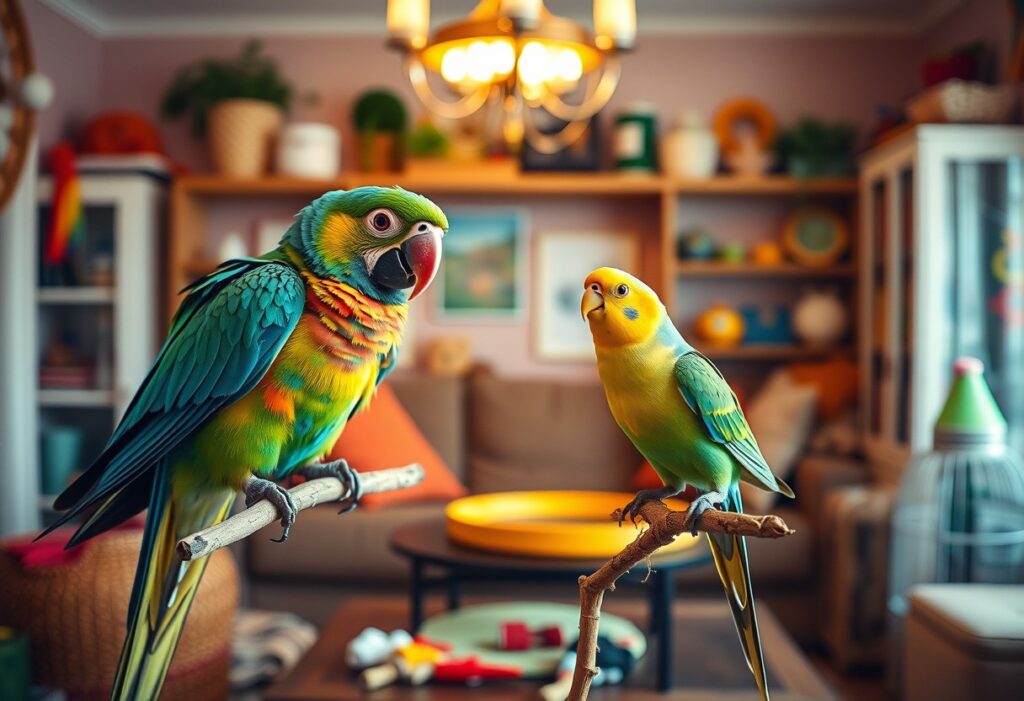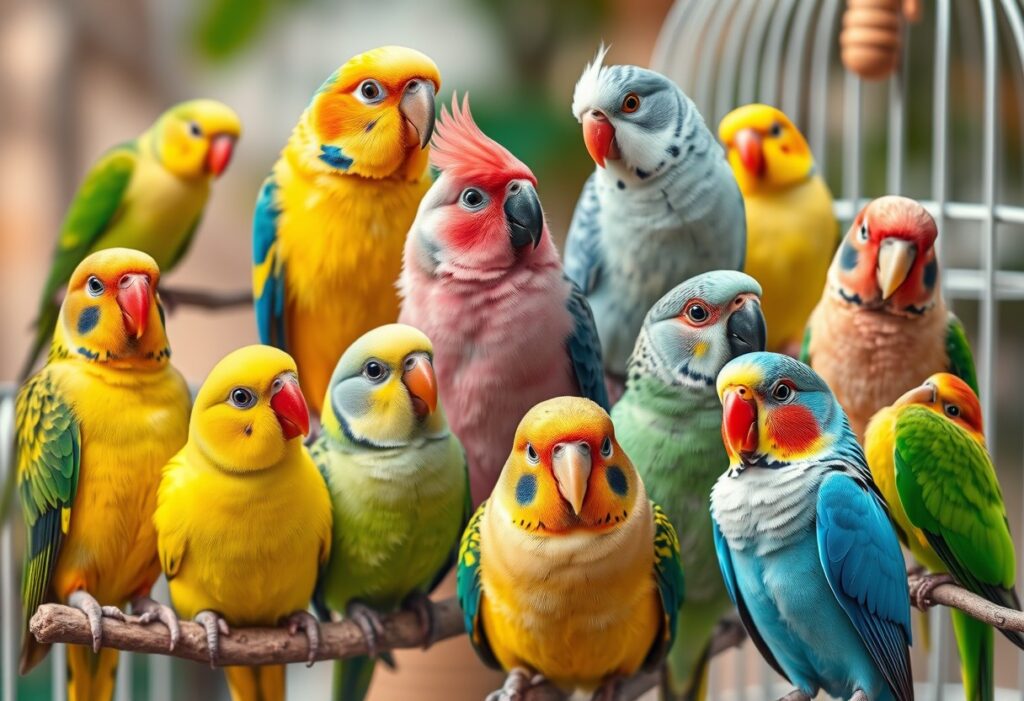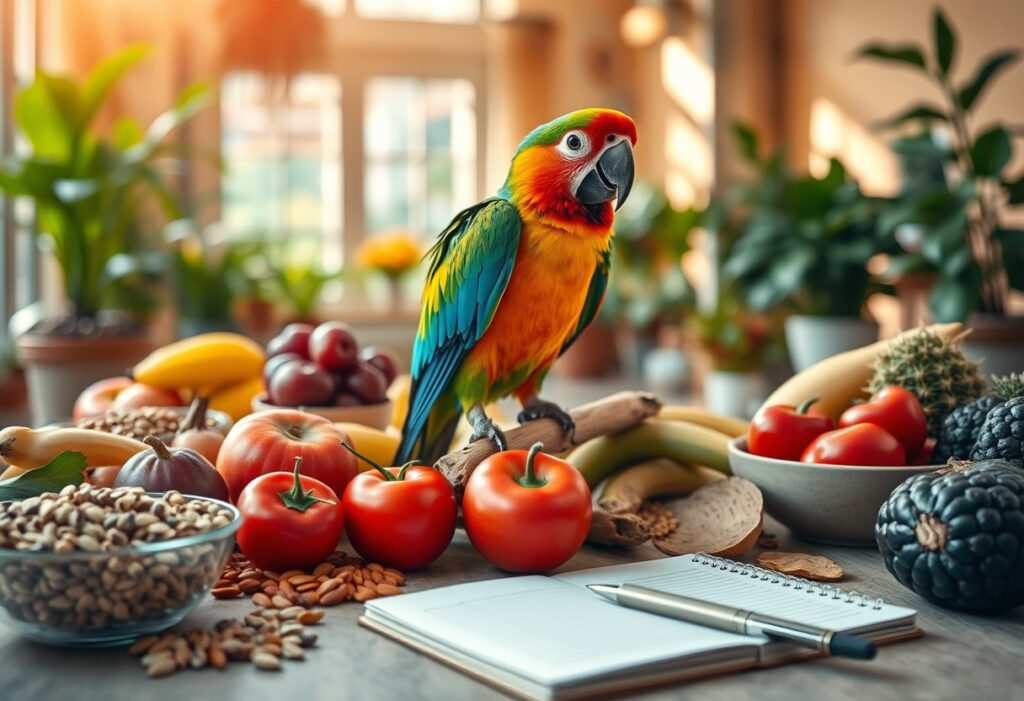You may be considering expanding your family with a feathered friend, but choosing between a parrot and a parakeet can be a challenging decision. Each species comes with its own unique characteristics, care requirements, and personalities that can significantly affect your lifestyle. Parrots are often larger, more vocal, and can have complicated care needs, while parakeets are typically smaller, gentler, and easier to manage. Understanding these differences is crucial in determining which bird will be the perfect fit for your home and lifestyle.
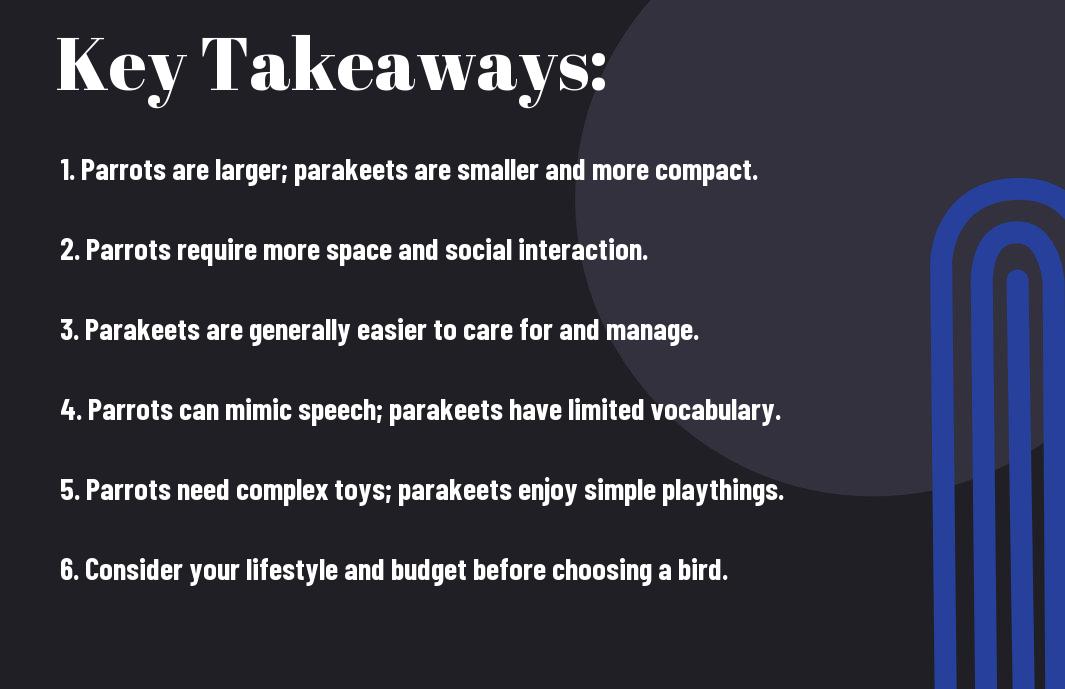
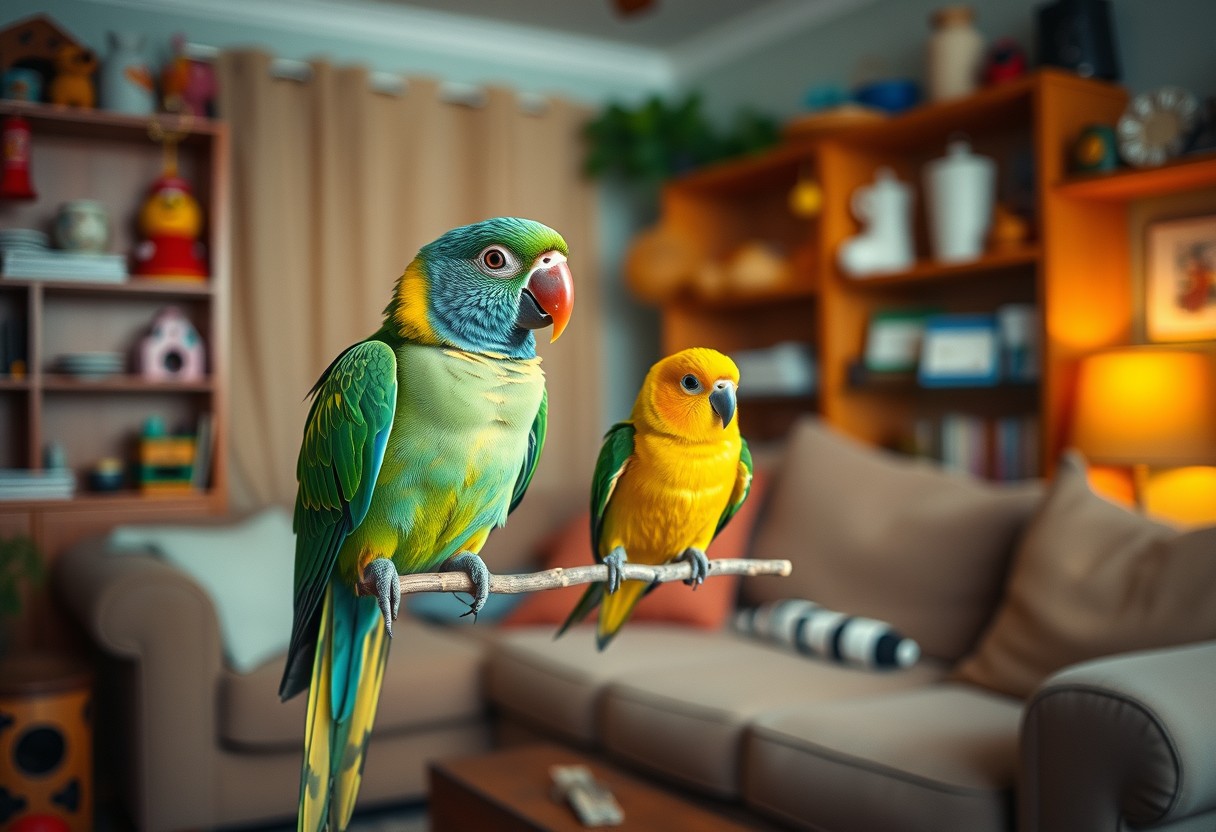
Understanding Parrots
The world of parrots is vibrant and diverse, comprising about 393 species that are known for their stunning colors, intelligence, and vibrant personalities. These birds belong to the family Psittacidae and are found in tropical and subtropical regions, particularly in Central and South America, as well as Australia and New Guinea. Some of the most notable species include the African Grey, Macaws, Cockatoos, and Amazon parrots. Each species exhibits unique traits, making it imperative for you to understand their characteristics before making a choice.
Overview of Parrot Species
Understanding the various types of parrot species is crucial when deciding on the right bird for your home. While some species are smaller and may fit well into compact living spaces, others can grow quite large, requiring significant space for flight and enrichment. Additionally, some parrots are more social and outgoing, while others may be more reserved or territorial. It’s imperative to research these aspects to find a parrot that aligns with your living conditions and lifestyle.
Common Traits and Characteristics
Overview of common traits and characteristics reveals that parrots, regardless of species, typically share certain distinct features. They are known for their bright plumage and powerful, curved beaks, which they use for cracking seeds and nuts. Parrots are also renowned for their remarkable intelligence and problem-solving abilities, making them highly trainable companions. Additionally, many parrots are capable of mimicking sounds and human speech, thus increasing their appeal as pets.
With their playful nature and strong social bonds, parrots thrive on interaction and mental stimulation. You may find that certain species require more attention than others, and their need for both physical and mental engagement can be quite demanding. Understanding these common characteristics will help you create an enriching environment that keeps your parrot happy and healthy.
Care Requirements
To ensure a happy and healthy life for your parrot, it is crucial to meet their care requirements. Parrots require a spacious cage, a balanced diet rich in fruits, vegetables, seeds, and pellets, and regular social interaction. They also need mental stimulation through toys and activities, as boredom can lead to destructive behavior. Additionally, routine health check-ups with an avian veterinarian can help maintain their overall well-being.
Species-specific care requirements can also vary significantly. For instance, larger parrots like macaws may need larger living spaces and a more varied diet compared to smaller species like budgerigars. Therefore, you should consider the unique needs of the specific parrot species you’re interested in to ensure that you are fully prepared for the commitment of care they require.
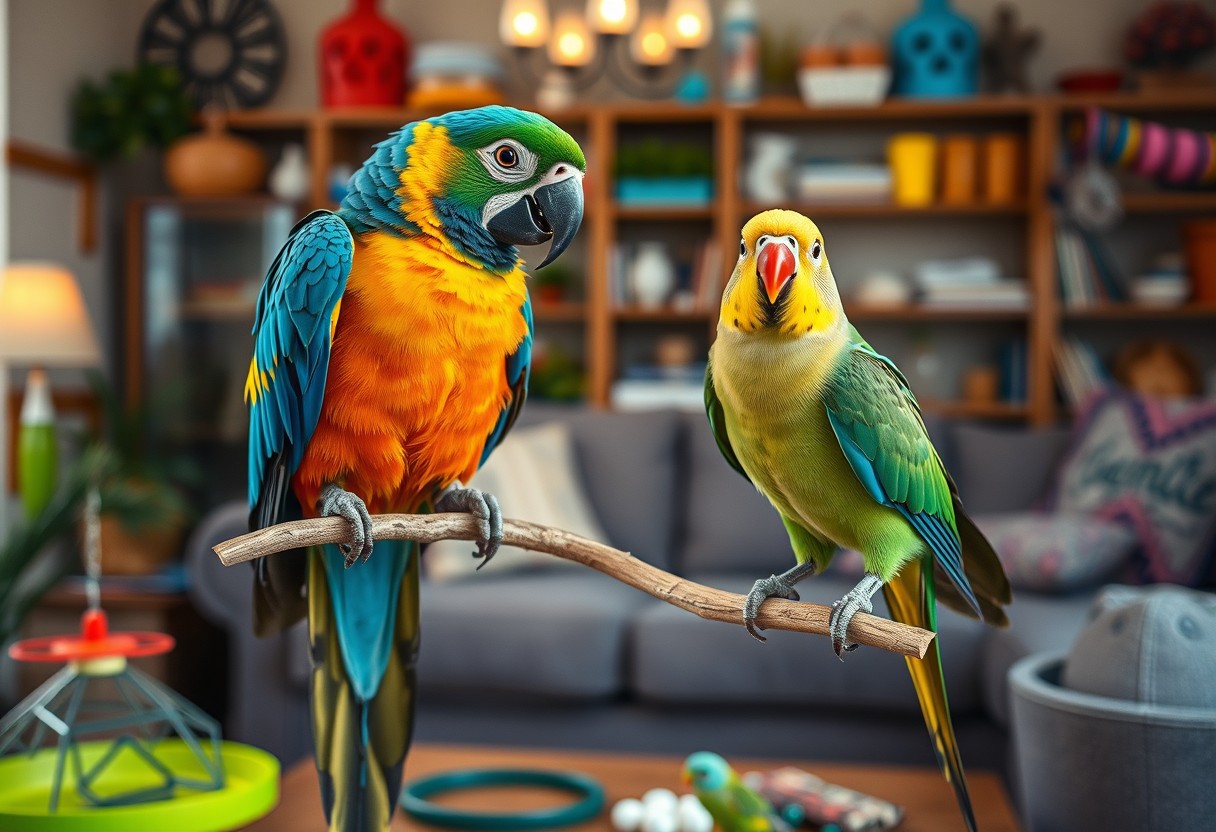
Understanding Parakeets
Little known to many, parakeets are a diverse group of small to medium-sized parrots belonging to the family **Psittacidae**. They come in various colors and patterns, making them a popular choice for avian enthusiasts. If you’re considering adding a feathered friend to your home, understanding the different species of parakeets can help you make an informed decision that suits your lifestyle.
Overview of Parakeet Species
With over 100 species of parakeets, it’s important to recognize some of the most common ones you may encounter as a potential pet owner. The most popular are the **Budgerigar (or Budgie)**, **Indian Ringneck**, and **American Parakeet**. Each species has unique traits and temperaments that can influence how well they adapt to your home and family dynamics.
Understanding the individual requirements and characteristics of each parakeet species is crucial. For example, Budgies are known for their playful and social nature, while Indian Ringnecks may exhibit a more independent personality. Make sure to consider these differences as you determine which type of parakeet is best suited for you.
Common Traits and Characteristics
Parakeets are generally known for their friendly and sociable demeanor, often forming strong bonds with their human companions. They are typically very intelligent and can even learn to mimic sounds and words, providing endless entertainment. Moreover, parakeets thrive on social interaction; whether it’s with you or other birds, they will become unhappy if left alone for extended periods.
Characteristics such as their playfulness and curiosity make parakeets an appealing choice for pet owners. They require mental stimulation, so providing them with toys, swings, and an engaging environment can significantly improve their happiness and well-being. Additionally, they can adapt to various living situations, whether in a small apartment or a spacious house, given they have enough interaction and mental engagement.
Care Requirements
With any pet, understanding care requirements is critical. Parakeets need a spacious cage that allows for flight and adequate room to play. Regular exercise outside the cage is important for their physical and mental health. Additionally, their diet should be balanced, consisting of high-quality pellets, fresh fruits, and vegetables to ensure they receive important nutrients. Maintaining cleanliness in their habitat is also vital to prevent illness.
It’s crucial to recognize that parakeets are social creatures who require your attention and interaction daily. Without proper care and engagement, these birds can become stressed or develop behavioral issues. Providing a stimulating environment, incorporating playtime, and fostering a bond with your pet will contribute to their overall happiness and longevity.
Species-specific needs can vary, so it’s important to research the particular parakeet you are interested in. Creating a healthy and nurturing environment will lead to a fulfilling relationship with your new feathered friend.
Comparing Parrots and Parakeets
Once again, the choice between parrots and parakeets can hinge on several distinct factors. Understanding these differences can significantly influence your decision-making process, whether you are considering adopting a feathered companion or expanding your avian family. Here’s a closer look at how these two popular bird types compare.
| Feature | Parrots | Parakeets |
|---|---|---|
| Size | Generally larger, can weigh from a few ounces to several pounds. | Smaller in size, typically weighing around 2-4 ounces. |
| Space Requirements | Requires larger cages and more space for flight. | Can be accommodated in smaller living spaces. |
| Diet | Complex diets; often require high-quality pellets, seeds, fruits, and vegetables. | Similar dietary needs but can adapt well to simpler diets. |
| Social Interaction | Highly social; often need more interaction and mental stimulation. | Can also be social but may be less demanding than larger parrots. |
| Lifespan | Can live for 20-80 years depending on the species. | Generally lives for 5-15 years, with some exceptions. |
Size and Space Considerations
On average, parrots are notably larger than parakeets, resulting in different space requirements. If you’re considering a parrot, ensure you are prepared to provide a spacious, stimulating environment that allows for both free flight and adequate play space. Large cages are crucial, and some species benefit from a dedicated bird room.
In contrast, parakeets, being smaller, require less space overall, making them a suitable choice for apartment living or homes with limited room. However, it’s still critical to give them enough movement and social interaction, as these birds also thrive with adequate space for exercise.
Diet and Nutrition
Considerations about diet when comparing parrots and parakeets can be vast. Parrots typically require a more complex diet and are known to have specific nutritional needs. This often includes high-quality pellets, fresh fruits, vegetables, and occasional treats like nuts. Within this realm, it’s paramount that you stay informed on their dietary preferences to maintain their health.
On the other hand, while parakeets can also enjoy a varied diet, they may adapt more easily to a simpler feeding regimen. That said, they still benefit from fresh produce and a balanced mix of seeds, pellets, and grains to promote thriving, active lives. Understanding their dietary needs can help prevent issues that arise from malnutrition.
A well-rounded diet is crucial for the health of both parrots and parakeets, as it significantly impacts their energy levels and overall well-being. Regularly consulting with an avian vet for personalized dietary recommendations will help keep your feathered friend thriving.
Social Behavior and Interaction
Nutrition plays a vital role not only in physical health but also in your bird’s social behavior and interaction. Parrots are exceptionally social creatures that thrive on constant interaction with you and other birds. They require a high level of mental stimulation, and it’s crucial to provide various toys and activities to keep their minds engaged. Neglecting to meet these social needs can result in behavior challenges.
Conversely, while parakeets also enjoy interaction, they may be slightly less demanding in terms of social engagement compared to larger parrots. They often entertain themselves more and can be a good choice for those who may not have as much time to devote to their pets daily. However, it remains vital for both types of birds that you invest time in bonding and social activities.
The importance of social interaction cannot be overstated. The more you are involved with your bird, the stronger the bond you will form, ultimately contributing to a happier and healthier pet.
Lifespan and Longevity
Parrots generally exhibit impressive lifespans, often ranging from 20 to 80 years, depending on the species. This long-term commitment means that you should be thoroughly prepared for their needs throughout their life stages. Understanding that you could be caring for a parrot for decades is crucial when considering whether this feathery friend is the right fit for you.
In contrast, parakeets tend to have shorter lifespans, usually lasting between 5 to 15 years. This can influence your decision if you’re looking for a pet that won’t require such a long-term commitment. However, a shorter lifespan doesn’t equate to lesser care; they still need proper attention and diligence against health risks to live a healthy life.
Space age matters when discussing lifespan. The more enriched the environment you create for your bird, the better their chances of leading a longer, happier life. Investing in quality care and being proactive about health can contribute significantly to your companion’s longevity.
Making the Right Choice
Many potential bird owners find themselves at a crossroads when deciding between a parrot and a parakeet. While both types of birds can make wonderful companions, the decision ultimately comes down to your specific circumstances and preferences. It’s crucial that you consider various factors that will affect your ability to provide a happy and healthy home for your new feathered friend.
Assessing Your Living Environment
Assessing your living environment is a key step in choosing the right bird for you. Parrots, particularly larger species, need spacious cages and plenty of room to fly and explore, while parakeets can thrive in slightly smaller spaces. Think about how much room you can dedicate to a bird and whether you have a safe, engaging environment for them to venture out of their cage during playtime. Accessibility and safety are paramount; make sure there are no hazards such as toxic plants or open windows that could pose risks.
Additionally, consider the number of birds you might want to keep. Parrots often require significant social interaction and may benefit from being in pairs or small groups, but this can take up more space and require more time and attention from you. Conversely, parakeets are usually more adaptable and can thrive singly or in groups. Analyze your living environment to determine what will accommodate your potential bird’s needs.
Time Commitment and Attention Needs
An important factor to consider when choosing between a parrot and a parakeet is the time commitment and attention each type of bird requires. Parrots, especially larger species, are known for their high intelligence and significant social needs. You will need to dedicate ample time each day to interact with them, provide mental stimulation, and engage in training sessions. In contrast, parakeets may require less time but still thrive on regular interaction and playtime with you.
Your ability to dedicate quality time to your bird is vital for their well-being. If you have a busy lifestyle, you will need to realistically assess how many hours a day you can allocate to bonding with your feathered friend. Birds don’t do well in solitude and may exhibit behavioral issues if neglected. It’s crucial to think about your schedule and how much daily interaction you can provide.
Budget Considerations
Choice of bird can also have significant budget implications. Parrots generally require a larger initial investment for their setup, including bigger cages, toys, and specialized food. They also may incur higher veterinary costs due to their complexity and healthcare needs. On the other hand, parakeets are usually more affordable both in terms of upfront and ongoing costs, making them a great option if you are on a tighter budget.
Understanding the financial commitment associated with owning a bird will ensure you are prepared for both expected and unexpected expenses. This includes initial setup costs, ongoing food and enrichment expenses, regular vet check-ups, and potential grooming or other services. It’s important to evaluate your financial situation realistically to choose a bird that not only fits your lifestyle but also aligns with your budget.
Final Words
Following this comparison between parrots and parakeets, you are now better equipped to make an informed decision on which bird suits your lifestyle and preferences. Consider your living space, time availability, and desired interaction level when weighing your options. Parrots can be more demanding and require a greater commitment in terms of care and companionship, while parakeets often present a more manageable choice for those new to bird ownership. Each species has its unique charm and characteristics, so reflect on your needs and desires before making a final decision.
Ultimately, whether you choose a parrot or a parakeet, both offer exceptional companionship and joy to your life. Remember to prioritize a bird’s social, emotional, and physical needs, as they both thrive on connection and stimulation. By taking these factors into account, you’ll not only be better prepared for bird ownership, but you’ll also enrich the life of your feathered companion, making for a happy, fulfilling relationship.
FAQ
Q: What are the main differences between parrots and parakeets in terms of care needs?
A: Parrots and parakeets have distinct care needs due to their size, intelligence, and social requirements. Parrots, being generally larger, require more space and larger cages. They also need more mental stimulation and social interaction, often thriving on toys and activities that challenge them. In contrast, parakeets are smaller and can be accommodated in smaller cages, though they still require plenty of toys and social interaction. Both birds should have a balanced diet, but the dietary needs can vary greatly due to their size; parrots often require more diverse fruit, vegetables, and nuts compared to parakeets, who benefit from seeds and pelleted diets. It’s vital to assess your living situation and lifestyle to determine which bird aligns better with your ability to meet these care requirements.
Q: How do the behavioral traits of parrots and parakeets differ?
A: Behavioral traits can vary significantly between parrots and parakeets. Parrots, particularly larger species, are known for their high intelligence and can develop complex behaviors, including problem-solving and mimicking human speech. They often form deep bonds with their owners, displaying affectionate and sometimes demanding behaviors. Parakeets, on the other hand, tend to be more social and can be less demanding as they thrive in flocks, making them more content when kept with a companion bird. While parakeets can also mimic sounds, their vocal abilities are typically less advanced than those of many parrots. Understanding these behavioral traits is crucial in determining which type of bird will fit best into your home environment and social dynamic.
Q: What should I consider regarding lifespan and commitment when choosing between a parrot and a parakeet?
A: Lifespan and the level of commitment required are significant factors to consider when selecting a bird. Parakeets generally have a lifespan of around 5 to 15 years, depending on their species and care, making them a more short-term commitment relative to parrots. Parrots, however, can have much longer lifespans, ranging from 20 to over 50 years, particularly in larger species like macaws and cockatoos. This long lifespan means that potential parrot owners must be prepared for a long-term commitment, including ongoing social interaction, mental stimulation, and care. It’s important to assess your current and future life situation to ensure you can meet the needs of your chosen bird throughout its entire life.
